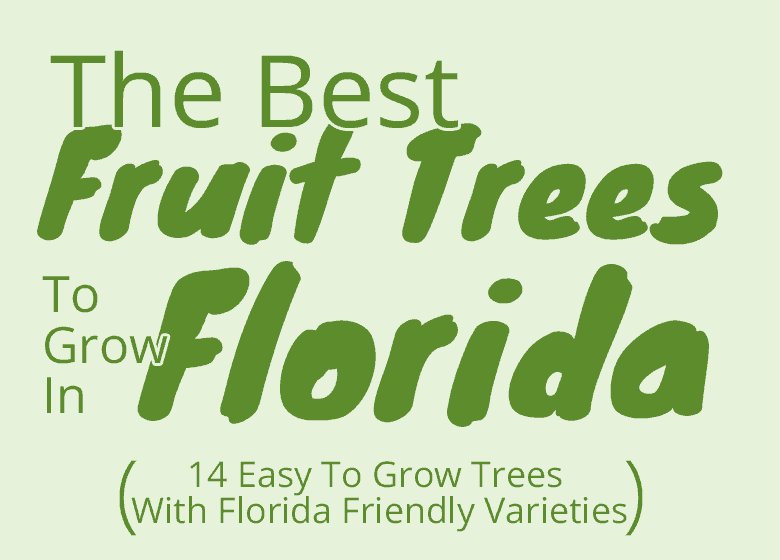Designing an edible landscape is the process of making your area look beautiful while also providing you with food.
There are a number of different edible plants that you can grow in Florida. Laying out an edible landscape design is fun and exciting. You are not only making your property beautiful but you are maximizing the space.
The best edible landscape plants for Florida are
- mangoes
- pecans
- citrus
- mulberries
- loquats
- blueberries
- cassava
- chaya
- Basil
- ginger
- sweet potatoes
- Rosemary,
- passion fruit.
This is by no means an all-inclusive list. This list is actually never ending, there is always a new plant to find. There are many more plants that you can choose, which I will discuss further as the post goes on.
It’s also important to note that not all of these trees will grow in both north and south Florida.
South Florida is a more tropical environment and will have plants like bananas, avocados, and star fruit. North Florida’s edible landscaping will have trees like peaches, apples and blueberries. Central Florida has a nice mix of them both.
Best Edible Landscape Plants For Florida
Florida has a fantastic climate that will support tons of different edible plants.
As mentioned above, north and south Florida have different climates. This means that these two areas will have different options available to them.
North Florida Plants
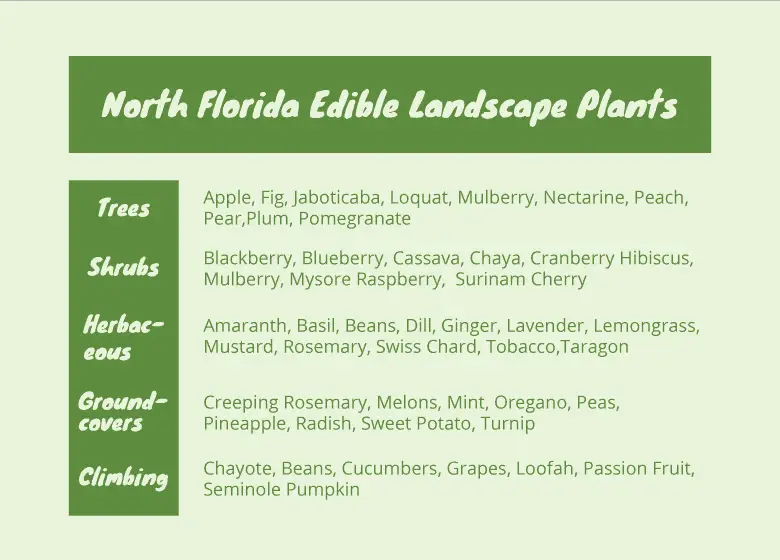
Central Florida Plants
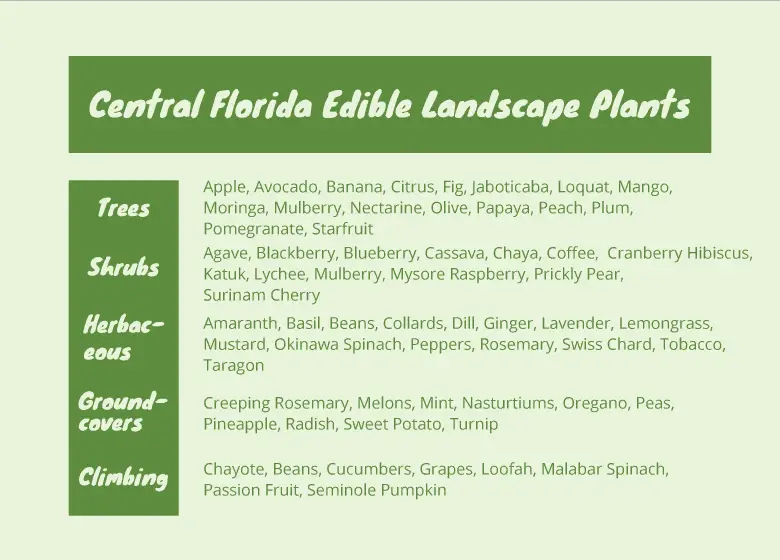
South Florida Plants
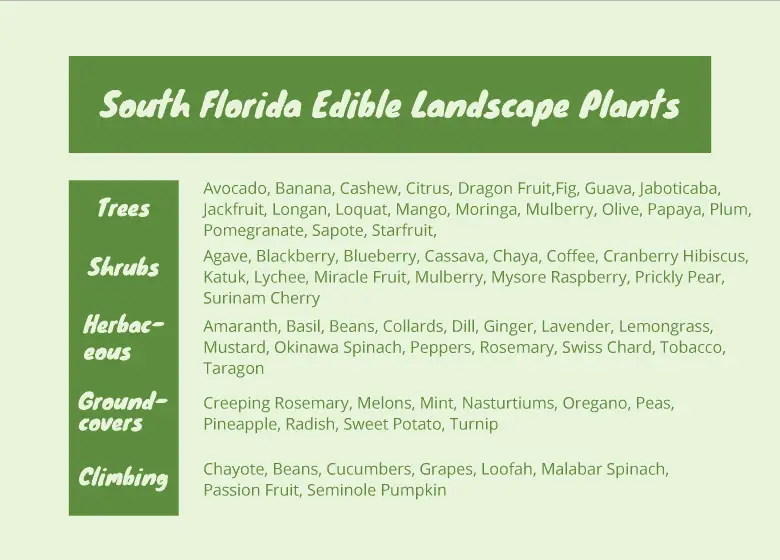
Keep in mind that you can rotate annual crops within these planting designs as well.
The herbaceous layer can be filled with a number of different vegetables. More than I could mention in these little charts. For more vegetables that you can grow in Florida and plug into these designs check out this post on easy to grow veggie in Florida.
Assessing Your Site
Assessing your site is one of the most important steps when planning to plant anything.
You need to know how much sun the area gets and whether or not the ground stays soggy or dry. What are the surroundings like?
You may have dreams of planting giant avocado trees and with citrus trees surrounding it. But you may also be surrounded by shade and soggy soil, which aren’t ideal situations for your dreams.
A good site assessment will help you blend your dreams with what nature is actually offering.
With a good basic assessment of your site, you will find out what you can and can not plant and where.
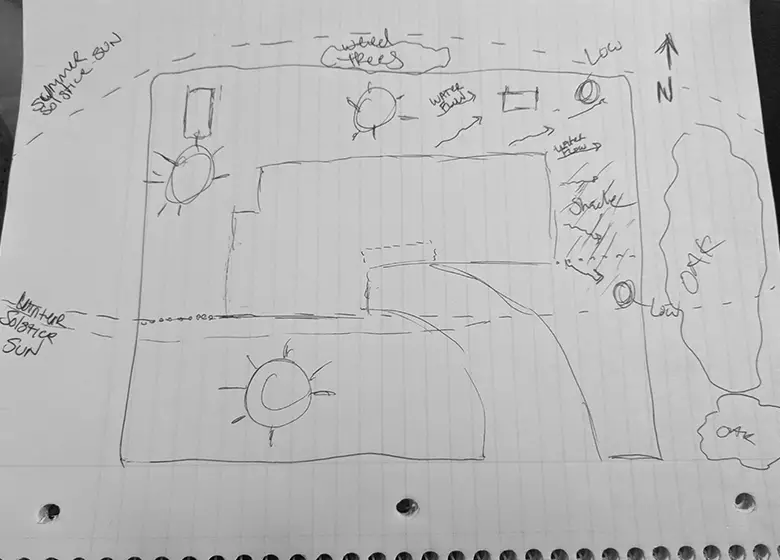
Things To Consider When Assessing Your Site
- Your areas slope and water flow.
- The sun’s path
- Surrounding structures
- Wildlife
- Possible microclimates
Really understanding your site and all that it has to offer is an ongoing process. It’s not something that you will be able to nail right away.
Finding the little spots that get just the right amount of shade or sun to suit a plant is something that you will notice as you begin to observe your area longer and longer.
I think the biggest thing to understand is how the sun’s movement will change throughout the year. Maybe I’m weird but I never really paid attention to how much the sun actually moves in the sky as the seasons changed.
But gardening forced me to pay attention to it. As we move into the summer the sun begins to rise (head north) in the sky. This causes shadows to shorten.
When we move into winter the sun begins to drop (head south) in the sky. This causes shadows to elongate.
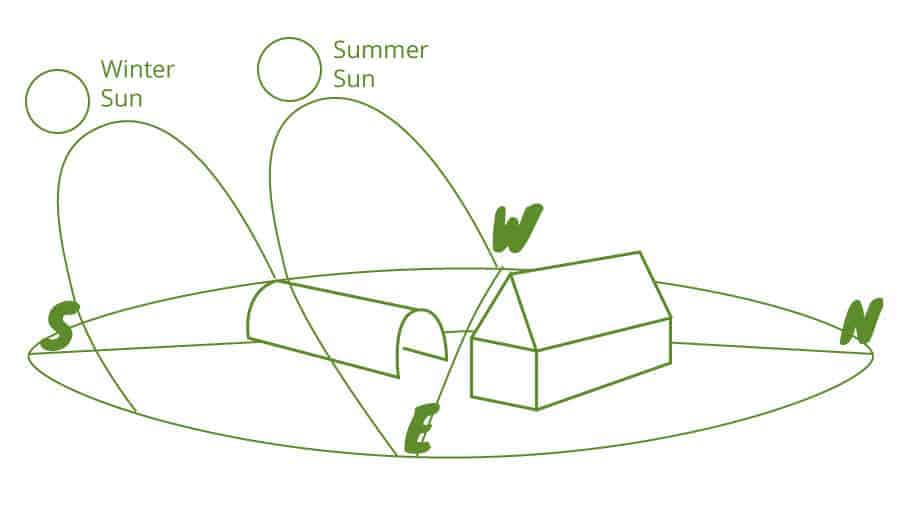
Finding Microclimates
Microclimates are really cool and I think these are how you take maximum advantage of your area. Microclimates are little areas that have a slightly different climate than the surrounding area. These can be caused by surrounding structures and topography.
For instance, I have a coffee plant growing at my house now. It took me some time to figure out what it liked but I now know that it prefers early morning light and then mostly shade throughout the day.
It also prefers high humidity and regular watering.
I have a perfect little microclimate that offers all those things on the east side of my house underneath some ligustrum shrubs.
It’s also on a slight slop which cause water to flow right on by. This place fits all the needs of my coffee plant.
Each site will obviously have different areas that fit different needs for different plants. Keep your eyes open and observe your site to see what you’re working with.
Designing Your Edible Landscape
When designing your edible landscape you should think in terms of layers and textures.
I like to think of having a focal point of the design. This can be either a fruit tree or it can be around a certain architecture of your house.
I like to keep it simple and think of only five different layers.
- Canopy Layer
- Shrubs Layer
- Herbaceous Layer
- Groundcover Layer
- Climbing Layer
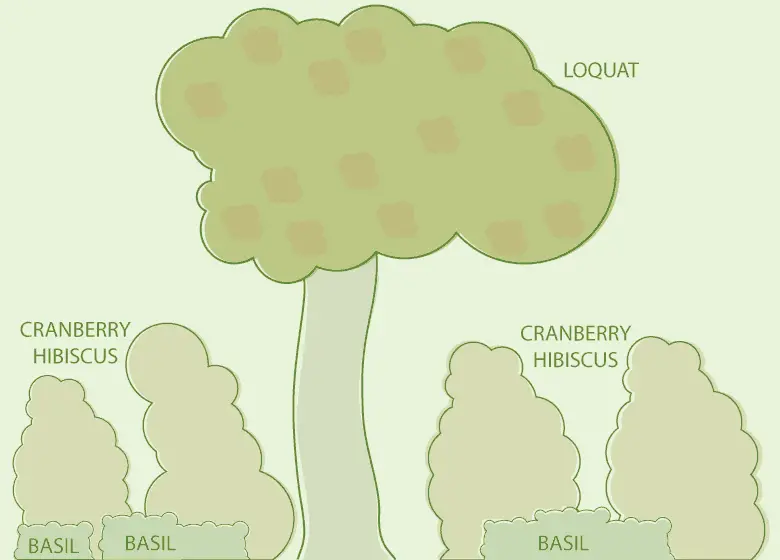
The canopy layer is usually your focal point, but not always. The tree in your canopy layer should provide you with food, shade and beauty.
Shrubs are there to add texture and fullness. The herbaceous layer could be things like basil or flowering plants like blanket flower.
Ground covers are there to add more texture and act as a living mulch. The climbing layer is made up of vining plants that could accent a structure like a decorative trellis, which could also be a focal point.
What Is Your Main Goal?
Are you looking for beauty and food? or are you looking for privacy and food? If you are planting in your front yard maybe you are looking for a nice looking tree surrounded by shrubs and groundcovers that look beautiful.
Or maybe you are planting along your property line and you want to block your neighbor’s view of your yard or your view of theirs.
If privacy is your main concern then you might be better off planting edible hedges like chaya or cassava as the focal point with smaller herbs in front of them which will add some texture to your design.
There is no one size fits all approach to designing your garden. A good design comes from a lot of observation and time (and maybe a few dead plants along the way.)
Florida Edible Landscape Design Examples
There are some really good guys that I’ve learned a lot of edible landscaping knowledge from in Florida. The two guys that I watch the most on Youtube are David the good and Pete Kanaris with Green DreamsFL.
They have lots of plant knowledge and have shown me lots of different plants that I’ve never heard of before.
If you haven’t checked them out, after reading this you should check out their youtube pages which I linked above.
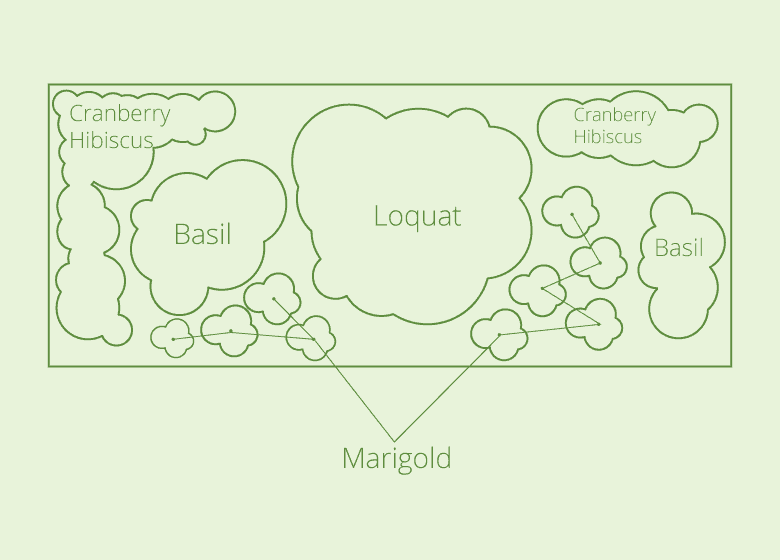
Expanding On Your Design
Above is a little fruit tree guild. The size of your garden is going to vary so use these designs as templates.
plugin different plants that fit your needs in terms of space and environment.
You can substitue different trees, shrubs and groundcovers to give you exactly what you want. Instead of Loquat, basil and cranberry hibiscus maybe you want to grow Bananas, Chaya, and Rosemary instead.
You can also multiply this design. To fill a larger area just repeat these steps as space allows.
And always try new and different plants. You will never know what you can grow until you try it. Don’t let the fear of killing a few plants scare you.
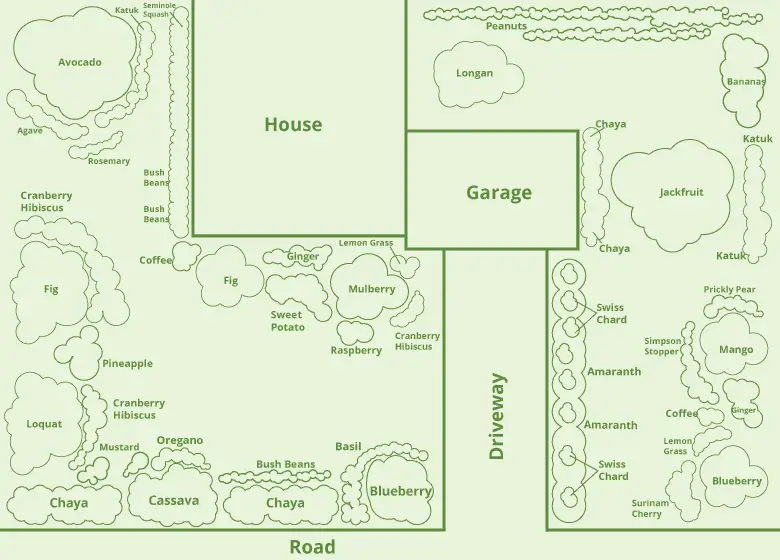
Best Time To Plant
For most of the plants mentioned here the best time to plant would be in the early spring time. In north and central Florida this is usually around March and in South Florida you can plant in February.
This is the time after fear of all frost is gone.
Honestly, though, you could probably plant these things at almost any time of the year. Most of these plants are grown as perennials in central and south Florida. North Florida winters can be problematic to some of these plants though.
My advice to you would be to avoid planting at the hottest months and also the coldest months.
You Will Probably Also Be Interested In:
